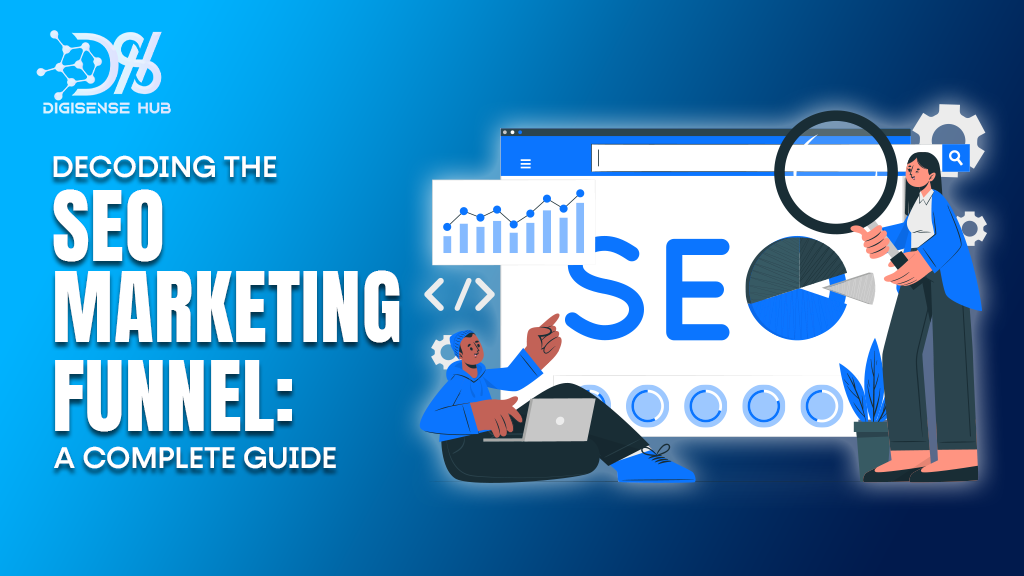Since there is more competition in the business world, enterprises will do their best to get more attention and attract more customers. Search Engine Optimization is the foundation for this job, and together with a sales funnel, it is the structure that allows the company to increase its online presence significantly. It is also necessary to consider the conversion of visitors to paying customers to be accomplished from the different marketing funnel levels of SEO. Here, we dissect the SEO marketing funnel, what it means, and how to use it for your company.
What is an SEO funnel, and Why Do You Need One?
An SEO funnel is a strategic approach that aligns your SEO efforts with the different stages of your customer’s buying journey. The funnel itself is a representation of how potential customers move from being unaware of your brand to becoming loyal advocates.
An SEO funnel is a plan to marry your SEO activities with the different steps of the customer buying funnel. What the funnel is, in itself, is an embodiment of the movement of potential customers, as they go from not knowing your brand through becoming loyal evangelists.
The three primary stages of the SEO funnel are:
- Top of Funnel (TOFU): Awareness stage.
- Middle of Funnel (MOFU): Consideration stage.
- Bottom of Funnel (BOFU): Conversion stage.
Therefore, a different SEO strategy will be needed for each stage in order to be seen by the customers when they are in the purchasing process. Through the establishment of content and web optimization for these stages, it is possible to use the funnel in a more productive way with a higher chance of conversion.
Key Components of the SEO Funnel
Knowing the core components of the SEO funnel will help you align your strategy with the needs of potential customers at different stages on their journey.
1) TOFU (Top of Funnel) SEO
TOFU, at the top of the funnel, will be the first step of attempt in order to win as many eyes as it is possible, even without any prior knowledge of the brand or the product in general. They are mostly at the “awareness” phase. People seek answers to life problems or have issues to solve but are not yet ready to make a purchase.
SEO Focus at TOFU:
- Content Creation: Center around producing informative and educational materials, including blog posts, videos, infographics, and eBooks. This work should concern fundamental issues or solve problems for your audience.
- Keyword Research: Identify high-volume, broad keywords related to your business. Develop long-tail keywords that are frequently searched but have low competition.
- SEO Tactics: Boost the efficacy of your web pages with the top SEO advice with keyword optimization, link building, and on-page optimization, including meta description and alt description.
When you’re generating useful content that can be found and accessed, you’re ready to get visitors to your website.
2) MOFU (Middle of Funnel) SEO
At the Middle of the Funnel (MOFU), At the middle of the funnel (MOFU), clients are already aware of their issue and searching for solutions. This is the phase in which they will benchmark various brands and search for specifications and information on a wide range of options. The aim here is to market your product or service as the perfect fit in the market.
SEO Focus at MOFU:
- In-depth Content: So deep content can manifest in many different ways (case studies, comparators, webinars, whitepapers), but these can all be used to describe the benefits offered by your solution in depth and also explain why and how it can provide one answer to the particular problem that that prospect has.
- Targeted Keywords: Focusing on the mid-range keywords with medium search volume and medium competition. They could be instances of more specific expressions related to your goods or services.
- Lead Nurturing: These days, more than ever, content that nurtures leads is crucial. Conceive of incorporating such calls-to-action (CTAs) as “Request a Demo” or “Sign Up for a Free Trial” for the purpose of cultivating relationships with prospects.
MOFU SEO is about establishing trust and credibility with your potential customers by providing them with necessary information to assist them in making an informed decision.
3) BOFU (Bottom of Funnel) SEO
This happens to be the point of the funnel (or BOFU), as the leads are and they are ready to purchase. They have already tried everything else, with the user inching close to making a decision to buy. The goal of this phase is to reach out to them and make them understand that your brand is the one they should select and to convert them into paying customers.
SEO Focus at BOFU:
- Product-focused content: create landing pages, product pages, testimonials, reviews, and case studies. They should highlight the benefit of your product, customer satisfaction, and your product’s unique selling point (USP).
- Conversion Keywords: Include conversion-focused terms like “buy,” “best [product],” or “discount offers. These expressions indicate that the subject is prepared to take a decision.
- Optimized CTAs: Be specific and direct with your CTAs to help get visitors to make their final step in the conversion funnel. These may be, e.g., “Buy Now,” “Start Your Free Trial,” or “Get a Quote.
At this stage, the aim is to remove all ambiguities, fortify the value proposition, and move your audience to act.
How to Create an SEO Funnel for Your Business
Creating an effective SEO funnel for your business involves several key steps:
- Identify Your Buyer Personas: Understand Buyer Personas Understanding the specific requirements, struggles, and goals the audience has within each section of the marketing funnel will determine that you present suitable content targeted specifically to a defined audience for more effective implementation.
- Conduct Keyword Research: By applying keyword tools to identify terms corresponding to the different stages of the customer journey. It is used for deciding the right key words for TOFU, MOFU, and BOFU.
- Create Stage-Specific Content: Develop content for each stage tailored to the needs of the consumer. This ensures that you’re providing value throughout the entire customer journey.
- Optimize Your Website: Make your website easy to use, mobile-adapted, and fast and secure. An optimized web site can have a positive effect on SEO and conversion rate.
- Measure and Adjust: Accumulate periodic information on important metrics, including organic traffic, bounce rates, conversion rates, and engagement. On the basis of data, refine your strategy and stage your funnel even better.
Tips for Optimizing Your SEO Funnel
- Use Data-Driven Insights: From a repetitive standpoint, analyze the performance of your website using analytics tools (e.g., Google Analytics). That makes it possible to monitor the effectiveness of your content and find room for improvement.
- Leverage Social Proof: For example, integration of testimonials, reviews, and case studies with your content can help to generate credibility and trust, in particular, at the MOFU and BOFU stages of the procurement cycle.
- Improve Page Speed: It can lead to an extremely high bounce rate and the loss of clients if the websites are very slow to load. Please make site speed optimization a top priority for enhanced user experience as well as ranking on search engines.
- Engage with Email Marketing: Create email lists out of the traffic you generate at each funnel level and retarget them with customized content, promotions, and offers in order to maintain the audience’s interest.
- Focus on Conversion Rate Optimization (CRO): At BOFU, work on fine-tuning your landing pages and CTAs to maximize conversions. Split testing and A/B testing can help you find the best-performing versions.
Conclusion
An SEO marketing funnel is the tool every business needs to attract, nurture, and convert its customers online. With a full understanding of TOFU, MOFU, and BOFU, along with implementing the SEO strategy unique to each stage, it becomes possible to lead prospects through their buying journey.
Building a strong SEO funnel is not a one-night stand. It involves creating content, targeting keywords, and optimizing conversions with consistent effort. Keeping track of the latest search engine changes and consumer behavior can keep you ahead of the curve. That way, you’ll build a sustainable online presence that drives results to help you achieve your business goals.


